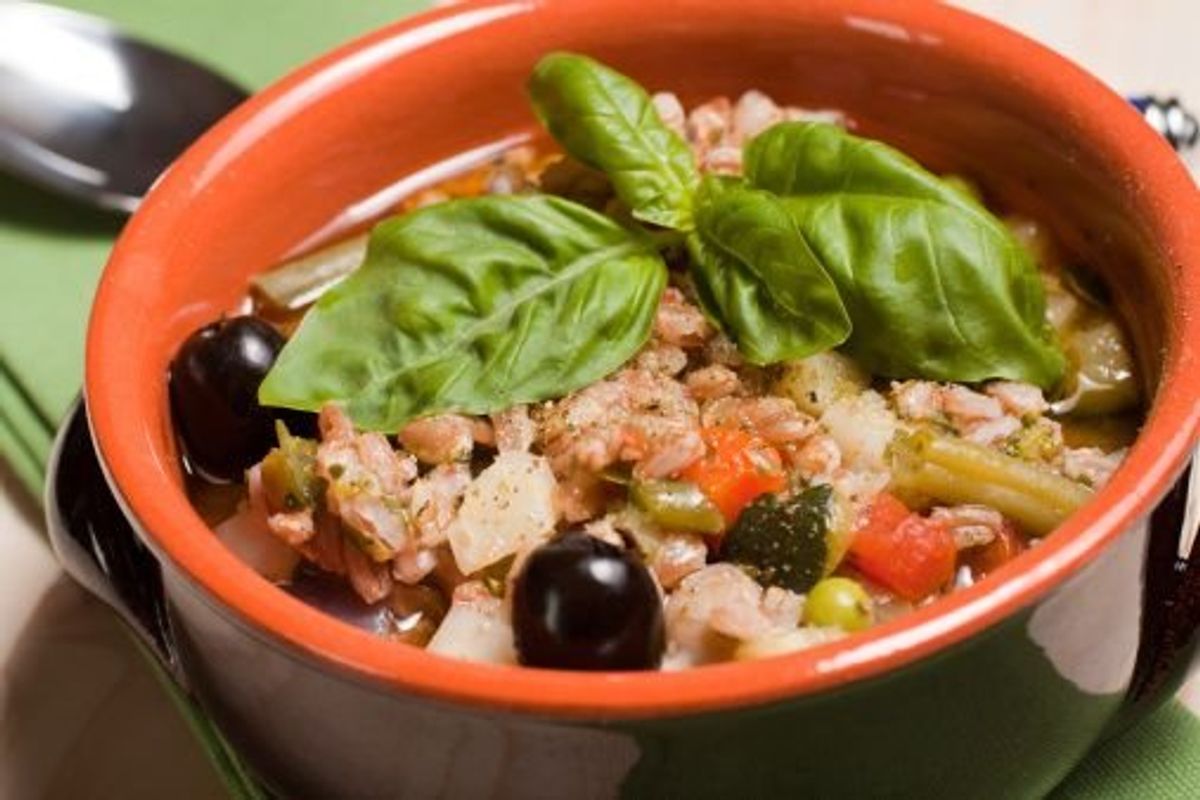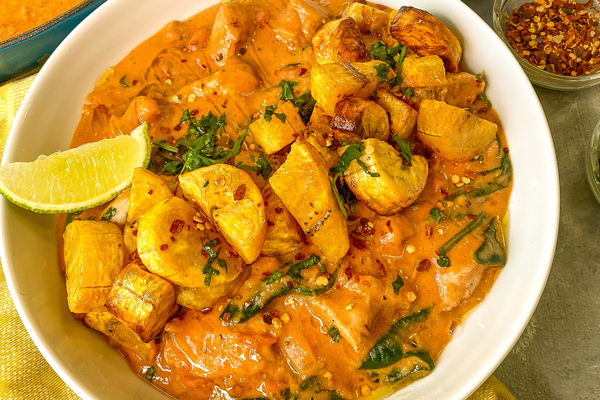When you're craving something to eat, flavor is probably the first thing you think of—not the food's nutritional content. Given the choice between tasty foods that aren't very nutritious and healthy foods that are full of vitamins and minerals but not much flavor, most of us would probably pick the former, if we had no sense of healthy living.
But the good news is that there are many flavorful healthy foods. Even some foods you may think you don't like can be spiced up and prepared in new ways that create delicious, healthy meals.
Here are some tips for shopping, preparing, eating out and expanding your tastes in new and exciting ways.
Shop for Variety
- Break away from the foods you buy every week and try new things. Look for one fruit, vegetable or whole grain that you've never eaten before. In the produce section, pick a mandarin or clementine instead of a navel orange, or buy kale instead of spinach. Farro is a tasty and versatile grain that has been around for centuries, and, yet, many people have never tried it. Give it a go. You can look in cookbooks, magazines or online to find ways of preparing and eating these new foods.
- If you're feeling adventurous, shop at an ethnic market. They are loaded with bulk spices, fresh produce and interesting grains that you may never have seen before. Shop around and visit various markets to discover what you like.
Cook Creatively
Switch up your cooking techniques:
- Use high-heat cooking methods such as pan-searing, grilling or broiling to intensify the flavors of meat, poultry and fish.
- Take those pan juices and slowly cook over low heat to reduce and concentrate the flavors for a tasty sauce or gravy.
- Grill or roast veggies for a sweeter, smokier flavor than you'd get by steaming them.
- Caramelize onions or other veggies over low heat with a little oil to bring out their natural sugars.
Spice It Up
Once you're comfortable with new foods and cooking techniques, you can really get creative. Don't be afraid to uses spices to give dishes more taste without adding extra calories.
- Take some time to read up on various spices to see which foods they go well with.
- Learn about the "spice palates" of different cuisines, like the fresh herbs used in Mediterranean regions or the warm-flavored ground spices that make the Indian spice mixture known as garam masala or the five-spice powder and fish sauce often used to enhance Asian dishes.
- If you want to stick with recipes you know, try varying them with a twist, like roasted garlic instead of plain minced garlic in mashed potatoes or pomegranate seeds instead of cherry tomatoes on a salad.
Go for the Combo
Sometimes a simple, nutritious food is excellent all on its own—that perfect peach fresh from the orchard, a crisp salad lightly dressed, a grilled salmon filet. But sometimes you want a little something more. Think about things you can add or combine to create exciting flavors. That farro we mentioned earlier? It's wonderful topped with a sauce of mushrooms sautéed in wine and vegetable broth, with a little fresh asparagus tossed in near the end.
Besides mushrooms and those kitchen staples of onions, carrots, celery and garlic, here are some other foods you can use to jazz up your cooking.
- Add fresh or dried red, green and yellow peppers. There are so many varieties, from sweet to hot, each with its own nuance. If you don't have peppers handy, add a dash of hot pepper sauce.
- Go bold by adding small amounts of healthy ingredients with bold flavors, like pomegranate seeds, walnuts, chipotle pepper or cilantro.
- Try a tangy taste with citrus or vinegar. Citrus juice or grated zest from lemon, lime and orange can help balance flavors and reduce the need for salt. Likewise, various vinegars can enhance soups, salads and sauces.
- For an earthier flavor, use whole grains, such as brown rice, wild rice, quinoa, barley, amaranth or farro.
- Set out the condiments. Salsa is fabulous on eggs in the morning, and for lunch you can spice up that sandwich with horseradish, flavored mustard or hummus. At dinner, how about some chutney or wasabi or tapenade?
Eating Out
Dining out can be a landmine designed to destroy healthy eating, but that doesn't mean you can't find flavorful healthy foods at restaurants.
- Start by looking for new restaurants that can help you expand your tastes, especially ethnic restaurants and local restaurants that feature seasonal ingredients and simple preparations.
- Stay away from fried foods and heavy sauces, but don't be afraid to try new foods and spices. If you want your salmon topped with dill sauce, order the sauce on the side—a little can go a long way.
- Make the appetizer your main course. Sometimes they are prepared more creatively than the main dishes, and one or two may fill you up.
- Watch your portions. Food can be delicious and healthy—and loaded with calories. Restaurant portions tend to be large, so even if you order something healthy, you may want to consider taking home a doggy bag or sharing with a friend.
- And speaking of sharing, that's a perfect way to enjoy a bit of dessert. Dark chocolate and fruit make a very flavorful healthy dessert (in moderation).
Switching up what you eat and taking a few more risks in the kitchen can ensure that you're not getting bored with healthy meals. It'll also make you less likely to crave not-so-healthy foods!
For more tips and recipes to help you enjoy eating healthier, check out the healthy recipes at HealthyWomen or visit the Academy of Nutrition and Dietetics.







